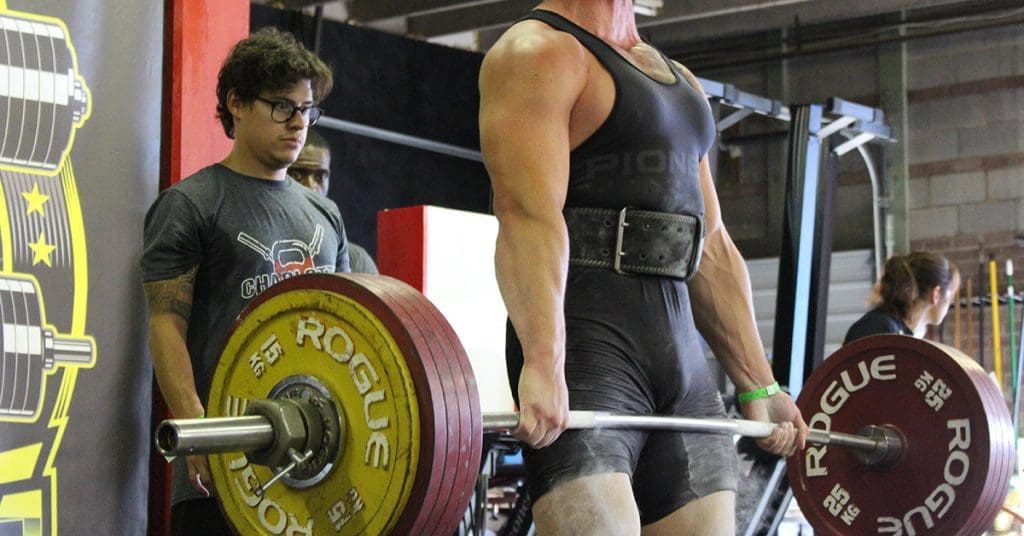In March of 2018, after around twenty years of running, and at the age of 60, I decided it was time to pack it in and get back to some serious gym work instead. Why? Well, mainly because my knees were beginning to suffer quite badly. I decided that I would look at Powerlifting as a new way forward.
I have always been a keep fit fanatic, and you can read more about that in this post.
I started back on a three days per week program of bodybuilding, which is what I had previously been used to doing. I continued in this vein for around eighteen months until one day, while in casual conversation with one of the gym instructors, the guy said to me, “do you train to look good or for strength?” I said that it was both really. However, it set me thinking and to be honest, I had never really considered the question before.
The switch to Powerlifting
When I began weight training back in my early thirties, as far as I was aware, there was only bodybuilding, and I had never really heard of Powerlifting.
At that time, there was no such thing as the internet, never mind YouTube, and everything I learned was from books. So I was amazed when I started researching Powerlifting, not only at how much information was now freely available but also at how technical it had all become.
I immediately decided to switch methods, and I took up Powerlifting instead of bodybuilding.
I started with a programme called five by five and downloaded an app called “Stronglifts 5×5“. It is a beginner powerlifting program that takes you from the basics and works you up, concentrating on technique more than weight. There is an app available for download, and it is brilliant. I highly recommend it if you are starting on this path.
You must get your lifting technique right. If you don’t, you risk serious injury once you lift anything near or over your own body weight.
I found it very frustrating for the first few weeks; it’s a twelve-week programme because it starts you off at around sixty per cent of your maximum weight capability. So, I was lifting weights that were way too light for me at the beginning, and it all seemed like a total waste of time. I was completing my gym sessions in around twenty minutes and walking out feeling as though I had achieved nothing. Still, I stuck with it and eventually, things started to get tougher. Once I got up to around 80% and over of my one rep maximums, it began to pay off.
I continued with the program after the initial twelve-week period for around an extra four weeks before switching to a more advanced system known as the Wendler 5/3/1 system.
I currently follow the Wendler program on a four-day split system.

Monday is deadlift day, Tuesday is the bench, Wednesday is for Squats, and Thursday is for overhead or military press.
I must say that since switching to Powerlifting, I feel far better for it and much stronger. The downside is that I miss the feeling of the muscle pump I used to get from bodybuilding. Powerlifting puts more bulk onto your body in the long run, but you tend to lose the muscle definition that comes from pure bodybuilding. So, the answer is to combine the two.
The problem here is twofold; the first is having the time to do it, and the second is having the stamina and willpower that is needed.
Both types of training take a lot of energy and time to complete successfully, but Powerlifting is probably the one that physically drains you the most. Therefore, I now ensure that the powerlifting program comes first, and I complete each day’s session before considering anything else. Then depending on how I feel on the day and how much energy I have left, I will usually do several “assistance” exercises, mainly aimed at bodybuilding and muscle definition. They will always be relatively low weight but high repetition exercises with the reps being divided into three sets per muscle group, starting at twenty-five reps, then fifteen reps, and finally ten reps.
It can be somewhat gruelling sometimes, but as with any fitness programme, there are good and bad days. On a good day, I will push myself to my maximum, and on a bad day, I will either not do any extra assistance exercises at all, or else they will be done with a minimum amount of effort required to get through them.
So far, it all seems to be working well, and according to a website called https://strengthlevel.com/, I am now ranked in the top 8% for my age and weight group for the deadlift, top 15% for shoulder press, top 11% for bench press and top 14% for the squat, so that seems pretty good to me.

